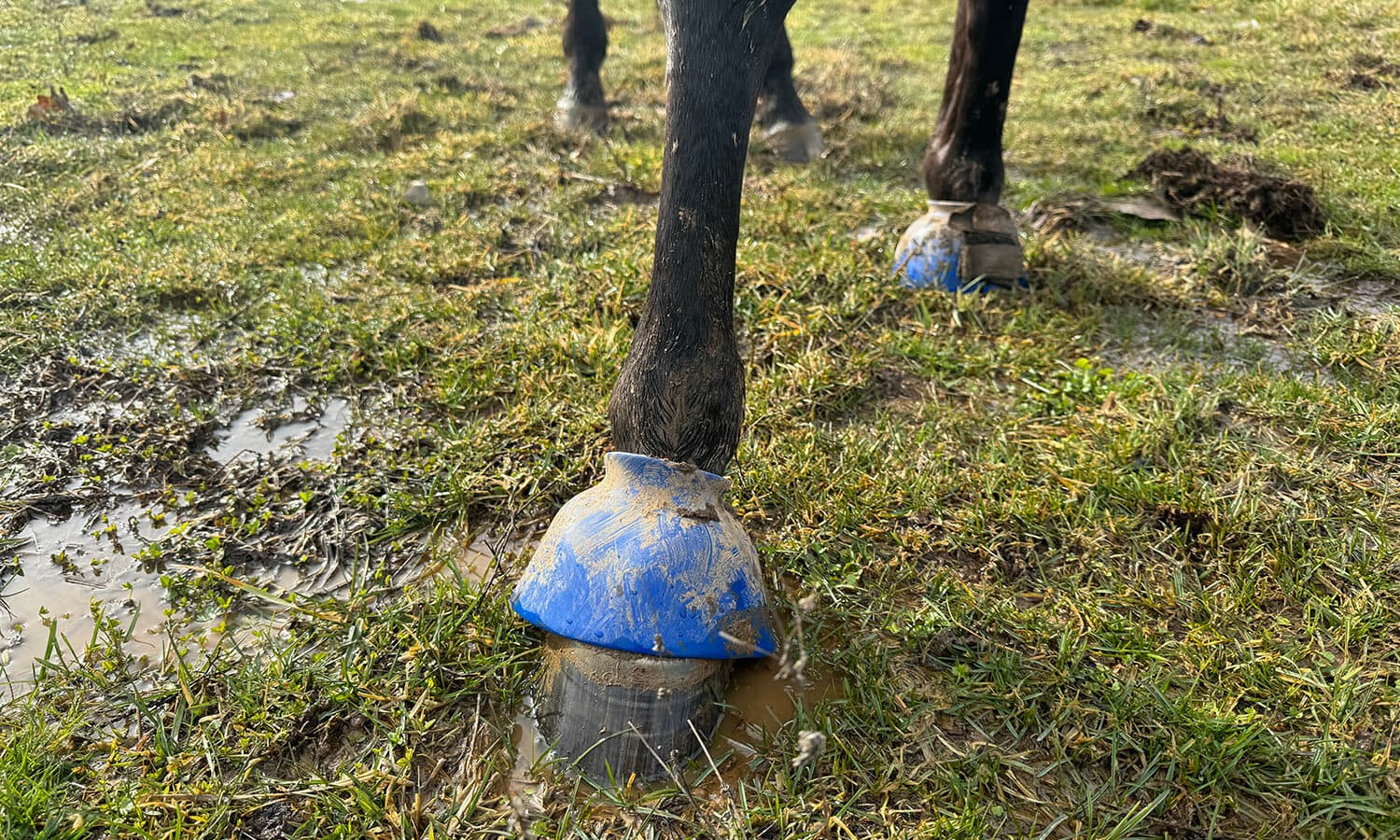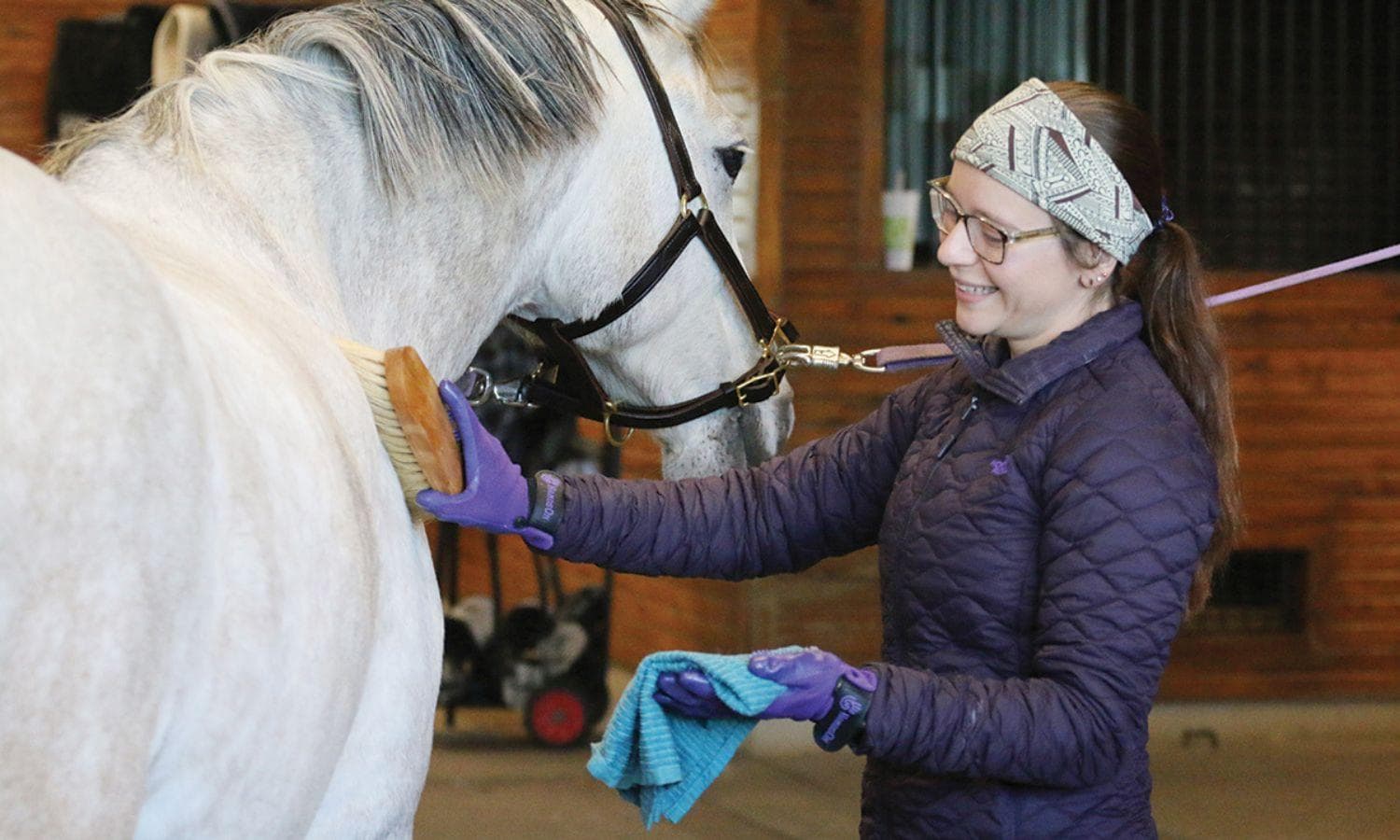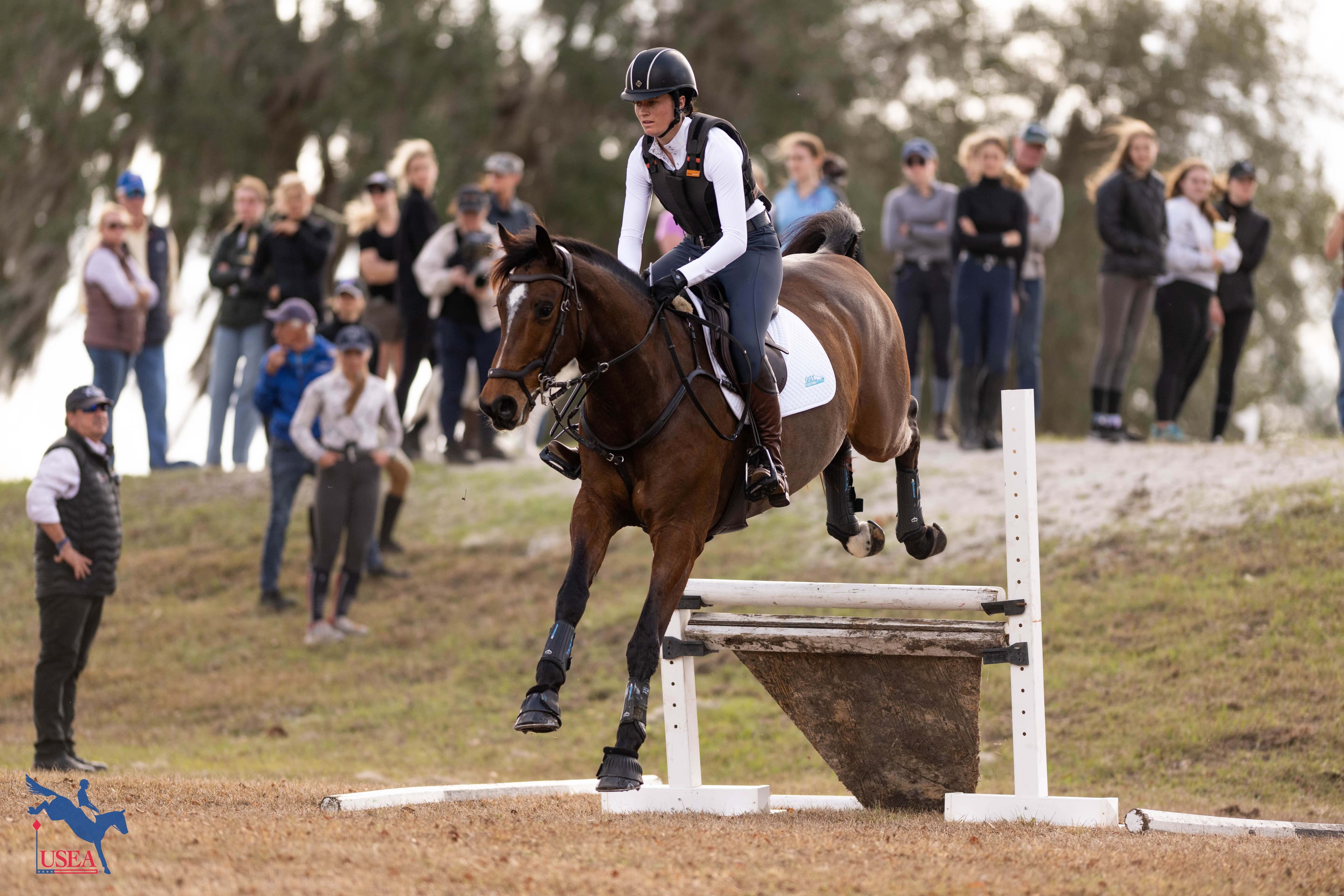6 Tips for International Hoof Care Month from Farrier Chris Martelli

Your horse’s feet are crucial to its health and soundness, so it’s imperative to pay close attention to hoof care year-round.
With that, a good relationship with your farrier is important to be able to catch issues early and correct them and to keep your horse’s hoof health on track.
February is International Hoof Care Month, so we caught up with farrier Chris Martelli to get his top tips for keeping your farrier happy.
You can find more tips from Martelli all month long on his Fox Hill Forge Facebook page.
The hoof is a product of its environment.
“When I pull through your gate, I’m paying attention to how your fields are kept, where you feed your horses in your field, the terrain you’re riding on,” said Martelli. “I’m looking at how well the grass is mowed, how tightly the fences are weed-eated—because it’s a direct correlation to how you keep your horses. When I walk in the barn, I’m looking at how your tack room is kept and what type of feed and hay you’re feeding. I’m looking at the stalls and what you’re bedding on. By the time I’m looking at the horse, now I just have to do my job. All of that plays in to how I shoe your horse.”
Pay attention to how and where your horse is living. If you keep your horse in a warmer climate in the winter and move back north in the spring, know that dew on the grass will always be an issue for nighttime turnout. If you live in a hot climate, daily baths may compromise the hoof.
“Dew sets at sundown,” said Martelli. “So, 6 p.m., the dew is setting on the ground. It’s there all night, then you bring the horse in in the morning, so the first time it’s seeing dry ground is 7 a.m. for feed. After that, say you ride him—you’re probably riding in the wet grass in the morning, then you give it a bath, then say it has the next day off, and it’s an aquaciser day—straight back into water.”
This kind of habitat is non-conducive for the hoof, which is made of keratin—the same as human fingernails and hair. The more moisture, the less structure that keratin is able to hold. That’s when the hoof can soften, resulting in increased wear and tear. It also creates an environment for bacteria, which can cause issues like thrush.
If you feed your horses hay or grain outside or if they live out 24/7, be conscious of where your feeders are and try to move them to dry ground if possible so they’re not standing in mud all winter.
“No matter how good of a job we do, they’re constantly in a compromised footing,” said Martelli. “The foot is 100 percent a victim of the circumstances.”
Care for hooves daily.
Martelli suggest picking out hooves daily and using a wire brush to get rid of any moisture-holding mud and muck.
He also suggests that if you decide to use a topical hoof oil or treatment to make sure you use it once daily.
“When it’s wet outside, people will want to paint Keratex on to do dry the foot out. If it’s really dry, they want to put a conditioner on,” he said. “What happens when you do that is you’re taking the ability of this foot to naturally be able to cope with moisture and dryness away from it, and you’re starting to dictate how it should be rather than allowing it to do its natural job. No matter what type of topical ointment or paint that you use on the feet, just stay consistent with that one all the time.”
Food and forage is as important as anything
“Everybody has all these saddle fitters and the chiropractor and the acupuncturist and the animal psychic or what not, but when is the last time you were at a farm and you met a nutritionist?” Martelli asked. "Having a nutritionist at your farm checking the pH of your soils, going through your pasture maintenance and soil maintenance and looking into all of your forage and feed—I think nutritionists serve such an important part in the individualistic horse, as much as a veterinarian.”
Universities that have vet programs or your local feed mill are a great place to start.
“That directly correlates to hoof health because it affects the blood system and keratin,” he said.
Don’t shoe to a calendar, but make your farrier aware of your competition goals.
Allow your farrier to determine what needs to be done and when. Hoof growth slows down in the winter, so your horse may not need to be done on a five-week schedule as he would in the summer.
“If I can’t make it better, I can only make it worse,” said Martelli. “I’m not worried about the check. I want my horse hoof health care to speak my name. If they need another two weeks, there’s no sense in my doing anything because all I’m going to do is make my job more difficult the next time due to having more holes in the foot, and we’re not moving forward.”
At the beginning of the season, lay out your schedule with your farrier and veterinarian, and include goals and highlights.
“It helps us know how and when we’re able to make moves on feet and how aggressive we can be or how passive we need to be through certain months,” said Martelli.
Don’t be afraid to speak up.
If your horse is sore after being shod or something just doesn’t seem quite right, don’t ever feel as if you can’t bring it up to your farrier, Martelli advised.
“Don’t feel like you might offend your farrier. If you have a good one, that will never offend them. Never feel like your opinion doesn’t matter.
“From the moment that we put a shoe on your horse, we have now put an apparatus on this horse that it was not born with naturally,” he continued. “We owe it to that animal to be there if it is at all different, sore, or there’s ever an issue. I might not answer 24/7, but if it’s 10 o’clock at night, and you tell me about one of my horses, I’m going to do my best to pick up, to deal with it, and be there to deal with it first thing to take care of it. Do not ever feel embarrassed by that as an owner. That’s your horse, that’s our duty, and we tied on to that the moment we put nails in that horse’s foot. We owe it to them to be there.”
Be generous with fly spray.
Stamping all summer long on hard ground is a surefire way to cause loose shoes, so apply and reapply fly spray often, or bring your horse in for part of the day if possible.
“Applying fly spray at least once a day truly helps shoes stay on horses—where they’re not stomping constantly and constantly banging their feet,” said Martelli.
Chris Martelli was born and raised in Lexington, Kentucky, and ran his Fox Hill Forge out of Ocala, Florida, for 12 years before relocating back to Lexington with his wife, Claire Martelli, and their young son. Martelli was living and working in Colorado as a cell tower tech after graduating from boarding school in Virginia when he attended a World Championship of Blacksmiths competition on a weekend off and couldn’t get enough. He immediately enrolled into The Kentucky Horse Shoeing School in 2009. Chris was the first student to complete and graduate from the most advanced program offered by KHS and earned a diploma from the National Farrier Training Center in 2012. He shod primarily Thoroughbreds in his first seven years, including Derby, Preakness, Belmont, and Breeders Cup horses. Chris now works on Olympic show jumpers and eventers and was an official farrier of the Alltech FEI World Equestrian Games in Tryon in 2018. His client list includes five-star eventers Lauren Nicholson and Chris Talley. In 2022, Chris shod three horses on the U.S. team for the FEI World Eventing Championship (Italy): Mai Baum, Off The Record, and Vermiculus.














